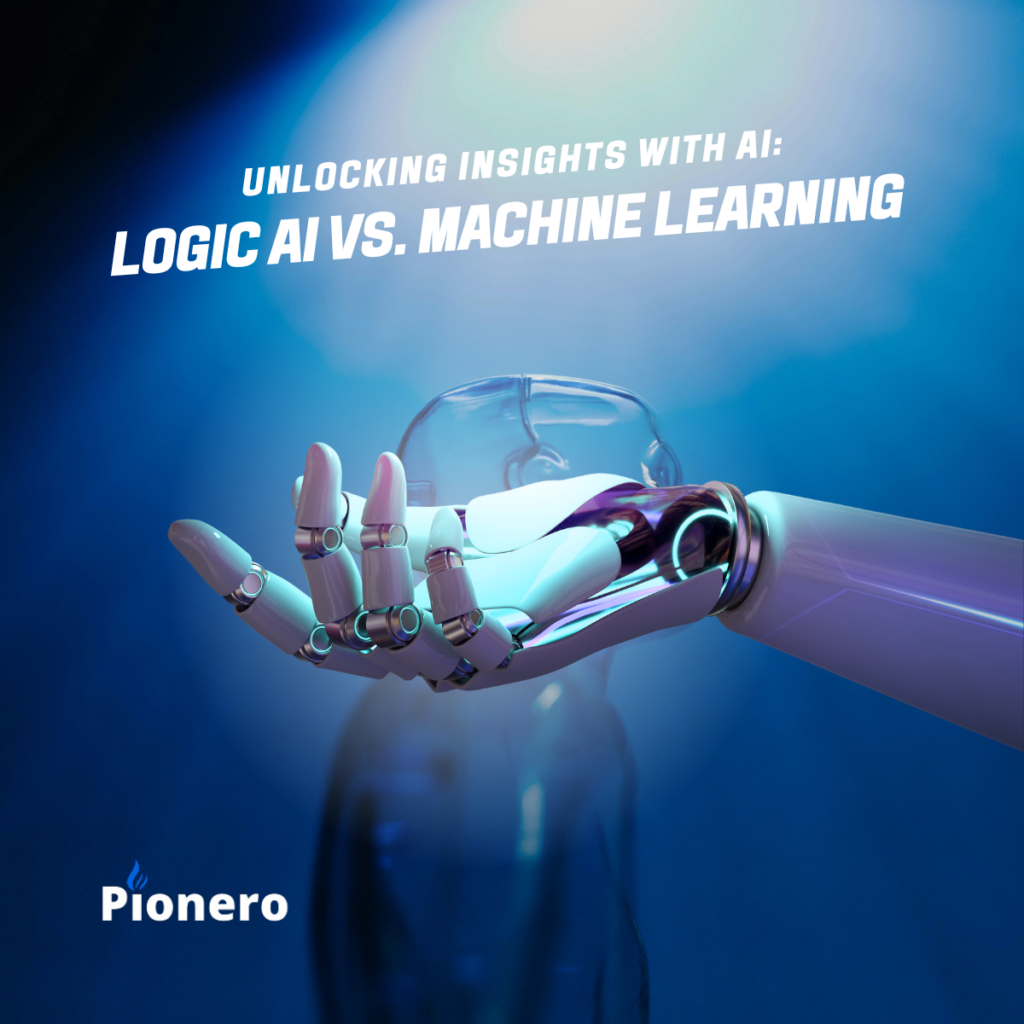In the world of artificial intelligence, two distinct approaches have emerged: logic AI and machine learning. While both strive to develop intelligent systems capable of solving complex problems, they differ significantly in their methodologies and applications. Understanding the distinctions and synergies between these two approaches can help startups and organizations make informed decisions about how to best leverage AI in their products and services.

Logic AI
Logic AI, also known as symbolic AI or rule-based AI, relies on predefined rules and algorithms to make decisions and draw conclusions. This approach is based on formal logic, where systems use a collection of if-then rules to process data and generate outcomes. Logic AI systems are typically more transparent in their decision-making, making it easier to understand and validate their reasoning.Key features of logic AI include:
Deterministic: Given the same input, a logic AI system will always produce the same output.
Explainability: Logic AI systems provide clear and transparent reasoning, making it easy to understand how a conclusion was reached.
Expert knowledge: Logic AI systems are built on domain-specific knowledge and rules, making them well-suited for tasks where human expertise can be codified.
Machine Learning
Machine learning, a subset of AI, focuses on developing algorithms that can automatically learn and improve from data without being explicitly programmed. By analyzing patterns in data, machine learning models can make predictions, detect anomalies, and adapt their behavior over time.Key features of machine learning include:
Adaptability: Machine learning models can learn and improve their performance over time as they are exposed to new data.
Scalability: Machine learning models can handle large datasets with numerous variables, making them well-suited for tasks involving complex patterns or high-dimensional data.
Robustness: Machine learning models can generalize from the training data and perform well even in the presence of noise or incomplete information.
Complementary Roles and Hybrid Approaches
While logic AI and machine learning have distinct characteristics, they are not mutually exclusive and can be used together in hybrid systems. Combining the strengths of both approaches can lead to more robust and adaptable AI solutions. Some scenarios where a hybrid approach may be beneficial include:
Incorporating domain knowledge: Logic AI can incorporate expert knowledge to guide machine learning models, making them more efficient and effective in tasks where human expertise is available.
Improving explainability: Logic AI can be used to improve the explainability of machine learning models, providing insights into the decision-making process and addressing concerns related to the “black box” nature of some machine learning algorithms.
Enhancing robustness: Logic AI can be employed to validate and cross-check the results of machine learning models, ensuring that the AI system’s decisions are accurate and reliable.
Example
A logic AI, or rule-based, approach can be employed to create a customer management chatbot that follows predetermined rules and algorithms. For instance, the chatbot can be programmed with specific if-then rules to handle customer inquiries, such as:
If a customer asks about product pricing, respond with the pricing information.
If a customer inquires about product features, provide a list of key features.
If a customer has a complaint, escalate the issue to a human customer support representative.
The chatbot would follow these rules consistently and provide predictable responses based on the input received.
A machine learning approach can be used to create a more dynamic and adaptive customer management chatbot. By analyzing customer interaction data, the chatbot can learn and improve its responses over time. Some potential benefits of a machine learning-based chatbot include:
Identifying patterns in customer inquiries to anticipate needs and offer proactive support.
Adapting responses based on customer sentiment or emotional cues detected in the conversation.
Personalizing interactions based on a customer’s preferences, past interactions, and behavior.
For example, the chatbot might learn that a particular customer prefers to receive information in a concise format and adapt its responses accordingly. In many cases, a hybrid approach that combines logic AI and machine learning can provide the most effective solution. For instance, a customer management chatbot could be designed to:
Use logic AI to handle straightforward inquiries based on predefined rules, ensuring quick and consistent responses.
Employ machine learning to analyze customer interaction data and identify opportunities to improve customer support processes.
Leverage machine learning to personalize customer interactions, providing more relevant and engaging experiences.
Apply machine learning to detect anomalies or trends in customer data, helping to identify potential issues or areas for improvement.
At Pionero, we recognize the importance of understanding the unique features and potential synergies of logic AI and machine learning. Our commitment to staying at the forefront of AI innovation enables us to develop tailored solutions that address your organization’s specific needs. By carefully considering the unique aspects of each approach, we design effective and efficient AI systems that drive innovation and success in your domain. Explore our AI R&D solutions to learn more about how we can help your organization leverage the power of AI.

